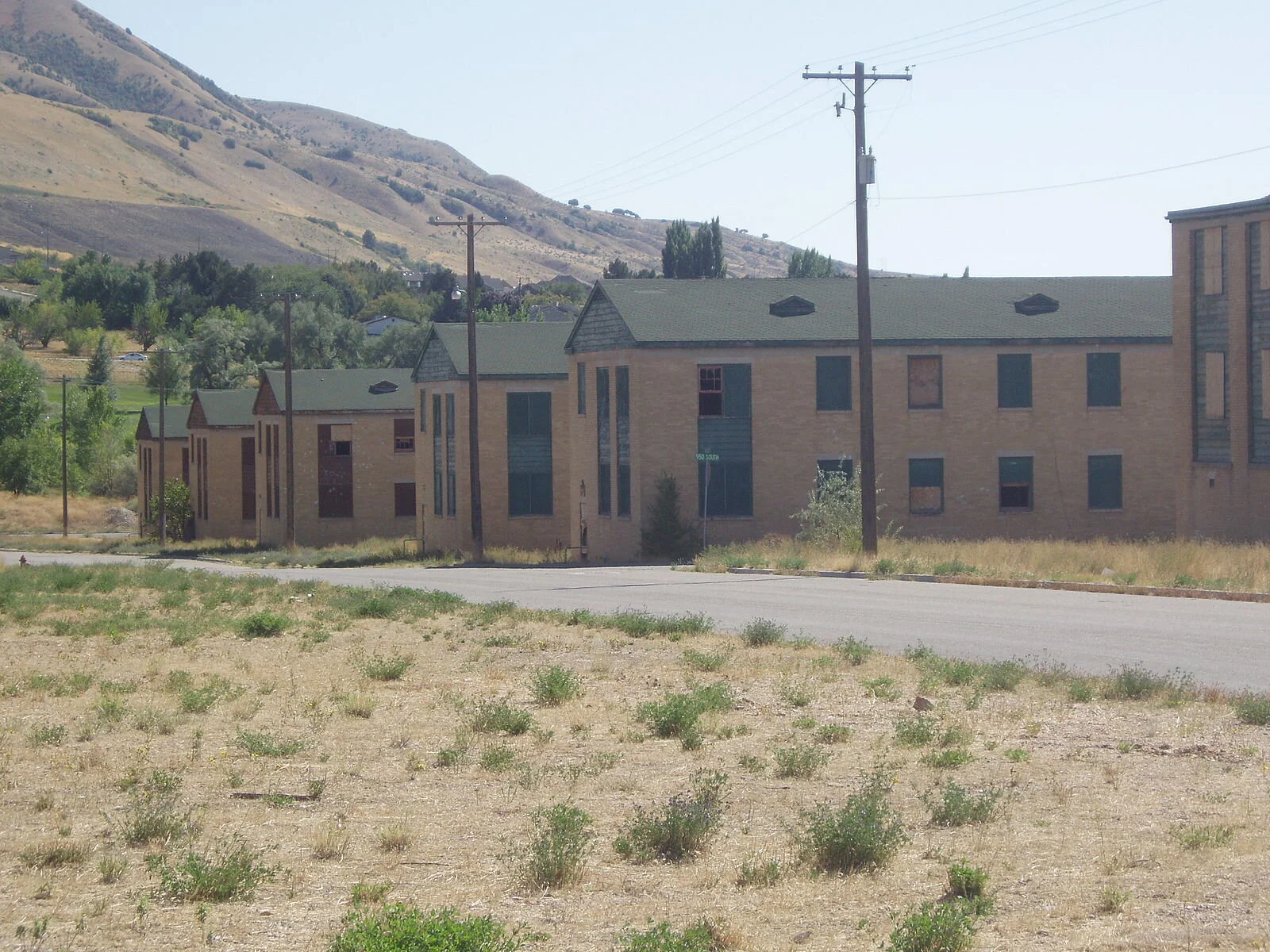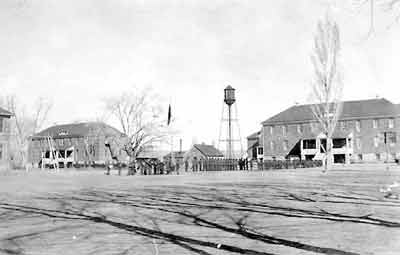Medical Experimentation on Indigenous Boarding School Students
We know students who attended Native American boarding schools experienced various types of violence at these institutions. What may be less well known is that students were also the subjects of medical research and experiments conducted without their (or their parents’) consent. Why did this happen? How are instances of medical experimentation on Native boarding school students connected with the broader history of medical experimentation on people of color in the United States? This post explores these issues.
The U.S. government, in conjunction with public and private medical institutions, has a long history of exploiting marginalized populations in the name of medical research. James Marion Sims was a prominent physician who conducted gynecological surgeries on enslaved women, without ether, because he believed African Americans did not feel pain to the same extent as white people. Many have heard of the Tuskegee experiment, in which the U.S Public Health Service offered medical care to African American men, but was actually seeking to study the effects of untreated syphilis. Reproductive control over marginalized groups is also a common thread in U.S history. Physicians, often at the behest of federal or state authorities, routinely sterilized poor white women, women of color, and physically and mentally disabled women throughout most of the twentieth century to limit the growth of allegedly undesirable populations.
What does this have to do with boarding school students? There is currently little scholarship that explores the extent to which Indigenous children in the U.S. were subjected to medical experiments. However, there is definitive proof that such studies did occur in the 1960s and 1970s. In March 1975, the Children’s Defense Fund (CDF) submitted a letter to federal authorities asking whether Native American children were being used in medical experiments, whether informed parental consent was obtained for such experiments, and whether children involved in potential experiments faced “unnecessary risks” from the drugs they were given. The CDF raised specific concerns that drugs for trachoma were being tested on Indigenous children. Trachoma is a disease that stems from eye infections, and was widespread among Native American populations in the nineteenth and early twentieth centuries. It remains more common among children than adults, and can lead to blindness if left untreated. By the 1960s, there were considerably fewer cases of trachoma among Native populations, but it still affected significant numbers of children and adults. At the request of the Senate Subcommittee on Indian Affairs, the Comptroller General’s Office prepared a report investigating the CDF’s concerns.
Through its investigation, the Comptroller General found that the Indian Health Service (IHS) had established a new trachoma control and treatment program in 1966. And while the program decreased trachoma in Native children from 13.8 percent in 1967 to 3.1 percent in 1975, its success was built upon a research program that used boarding school students as test subjects. According to the report, the Proctor Foundation for Research in Ophthalmology at the University of California, San Francisco, performed research on boarding school students between the 1967-68 and 1972-73 school years to determine the best treatment for trachoma. The study compared the efficacy of oral triple sulfa, tetracycline, and doxycycline as treatments, and also involved giving a placebo to some Native children with trachoma. The studies lasted 4-5 months each, and children who received placebos were treated with medication at the end of each study. Because trachoma was considered “mild” by those conducting this research, they did not view the delay in treatment of those students receiving the placebo as harmful to the children, despite the discomfort experienced by those afflicted with the disease. The studies were conducted at three Native American boarding schools:
- Stewart Indian School in Carson City, Nevada, 1967-1969;
- Intermountain Indian School, Brigham City, Utah, 1969-1971; and
- Tuba City Boarding School, Tuba City, Arizona, 1971-1973.
Above, left to right: The Stewart Indian School in Carson City, Nevada; Intermountain Boarding School in Brigham City, Utah; and Tuba City Boarding School in Tuba City, Arizona.
The central question of the report focused on whether the Proctor Foundation obtained informed consent from these children’s parents before conducting its research. Investigators discovered that, for the most part, the answer was no. The organization did not seek informed consent from Native parents because, according to Proctor’s logic, it was conducting the research on behalf of the Indian Health Service. Because Proctor viewed the IHS as the acting legal guardian of boarding school students, its researchers reasoned there was no need for parental consent. Proctor further suggested that consent was unnecessary because “only commonly prescribed drugs in standard doses were used” in the study. These justifications ignore the fact that Proctor and the IHS actually did discuss the need for consent for their trachoma studies, and even mailed consent forms to Native parents before the 1972-1973 school year. The two organizations also considered using consent forms during the 1971-1972 school year, but decided that since school had already started, sending forms to parents would only “confuse” them. Additionally, both Proctor and the IHS indicated that they had also sought and received tribal approval for their medical studies, though investigators found no documentation confirming this assertion.
While Proctor was correct in asserting that the drugs used in these experiments were “commonly prescribed,” like all drugs, there were also certain side effects that some users could potentially experience. For tetracycline and doxycycline, these included loss of appetite, vomiting, anal itchiness, nausea, and diarrhea. For oral triple sulfa, potential side effects included fever, vomiting, headache, nausea, hives, blood in the urine, swelling of the lips, and sores or blisters on the lips or inside the mouth. According to data provided by the Phoenix IHS office, between one and two percent of students exposed to these drugs experienced some of these side effects over the course of the studies, though specific details regarding student reactions were not disclosed. These side effects themselves are not the main issue here, because anyone treated for trachoma could experience any one of them. The broader problem goes back to the issue of consent - students and their parents were not warned about the potential side effects of these medications or given the option of declining to participate in this research because of them.
In addition to the Comptroller General’s report on Proctor’s activities in boarding schools, the Children’s Defense Fund confronted the institution directly about its medical research practices in 1975. After a meeting between the two organizations, Proctor indicated that it had ceased research and experimentation on Native American children as of 1974. It also released a statement explaining this decision, the tone of which expresses the organization’s displeasure at being caught in an unethical situation:
“…we were aware how easily a case could be construed that we were using ‘defenseless minority children’ to study an immunological problem, without direct and immediate therapeutical impact, and not presenting a major health problem among American Indians in 1974-75. This was a political issue, not a scientific or medical one. We were not willing to invite ‘trial by publicity’ (which has been common in recent years), and, therefore, we had abandoned experimentation on American Indian children as of September 1974. We realized fully that such withdrawal on our part would mean a possible reduction in ophthalmological surveillance and care for these children.”
This statement expresses no remorse for experimenting on Native children. If anything, it conveys anger and frustration that Proctor’s activities were questioned at all, and rather than explain why Native children were chosen as subjects, deflects any questions as purely political and without merit. In reality, the decisions made by Proctor and the IHS ignored research and medical ethics and crossed multiple moral boundaries.
As with previous instances of medical experimentation on marginalized populations, it is likely that Native American boarding school students were chosen for Proctor’s research because they had few actual avenues to question or protest their inclusion in this study. In the late 1960s and 1970s, many boarding schools enrolled students they labeled as orphans, as well as students from distant rural areas that did not have local high schools they could attend. Such student populations often lacked close family members who could easily intervene in school activities or ask questions about what was going on at a school. These factors made it easier for Proctor and the IHS to experiment on Native students with little outside interference or risk of parental interference.
I suspect that as more records from Native American boarding schools are found or released, we will discover additional instances of medical experimentation on students. In Canada, where records from its residential school program (similar in many ways to boarding schools in the U.S.) were subpoenaed and turned over to a national Truth and Reconciliation Commission, researchers discovered that experiments were conducted on First Nations children attending residential schools, as well as on adults living on reserves. Between 1930 and 1950, officials tested experimental drugs and vaccines on Indigenous children, withheld nutritional supplements from First Nations communities, and conducted unnecessary operations on seemingly healthy individuals.
We know for a fact that Indigenous children were forced to endure incidents of medical experimentation in the U.S. and Canada. These students’ experiences require further research and extensive disclosures on the part of the U.S. government and the organizations with whom it collaborated.
Sources:
Ian Mosby. “Administering Colonial Science: Nutrition Research and Human Biomedical Experimentation in Aboriginal Communities and Residential Schools, 1942-1952.” Social History. (May 2013)
“Report of the Comptroller of the United States to Senator James G. Abourezk.” (1976)
Linda M. Robin. “The Sterilization of American Indian Women Revisited: Another Attempt to Solve the “Indian Problem,” in Crime and Social Justice in Indian Country. Eds. Marianne O. Nielsen and Karen Jarratt-Snider. Tucson: University of Arizona Press, 2018.
Harriet A. Washington. Medical Apartheid: The Dark History of Medical Experimentation on Black Americans from Colonial Times to the Present. New York: Anchor, 2006.




